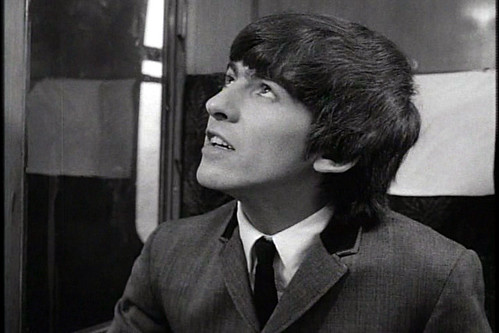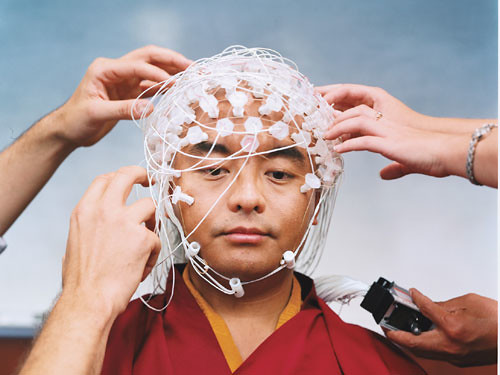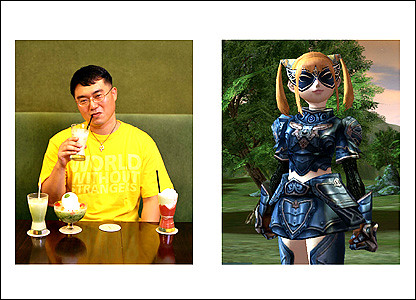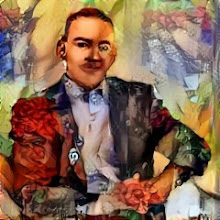
Picture: My Sweet Lord by George Harrison at Flickr by:
pasz / pasquale DI
(originally writen 2006)
In my earlier posts I have written about algorithm that can be used for analyzing the genome of Web 2.0 content.
Now - let us talk something practical and more business-oriented. Web 2.0 music. Music is my consolation and comfort, the source of energy and contemplation. I love Mercora Radio who brings me my daily religious confirmation in the form of the song My Sweet Lord by George Harrison ... it takes so long my Lord! it takes so long! ..., or, in the evening, the mysterious Crazy by Patsy Cline. Now, the advocates of the next generation internet, Web 2.0 or World 2.0 as they call it, say that to enrich my limited musical world I may use the Web 2.0 approach and TAG this consolation experience I am so desperately seeking. Right? Then I may find radio stations or individuals with whom to share this galactical lonelyness? So take the YAHOO del.icio.us service and start tagging, find peers, tune in, share the emptyness?
Sorry. I am soon 50 years old and my time is so limited. Find me a better, faster and more cost effective way to get exactly that music I need exactly there where I happen to be!
I am listening Mercora Radio. But, it may be, that the best there is available at the moment is perhaps Pandora. What is Pandora?
It's the "most comprehensive analysis of music ever undertaken". The Padora team of thirty musician-analysts have been listening to music, one song at a time, studying and collecting literally hundreds of musical details on every song to capture all of the little details that give each recording its magical sound - melody, harmony, instrumentation, rhythm, vocals, lyrics ... and more - close to 400 attributes!
This is what they promise: With Pandora you can explore to your heart's content. !!! I hear you Tim! ... "Just drop the name of one of your favorite songs or artists into Pandora and let the Genome Project go. It will quickly scan its entire world of analyzed music, almost a century of popular recordings - new and old, well known and completely obscure - to find songs with interesting musical similarities to your choice. Then sit back and enjoy as it creates a listening experience full of current and soon-to-be favorite songs for you." http://www.pandora.com/corporate/index.shtml
I like this, it is a good start. I tried it and must say it is still an early attemptbut some of the taxonomies worked pretty well. Here are some examples:
I wanted Georg Harrison, My Sweet Lord
Pandora offered me:
First song: Best of My Love by Yvonne Elliman
Why? This is the reason described by Pandora: This piece of music offers the same qualities as I was looking for - mild rhytmic syncopation, interweaving vocal harmony, mixed acoustic and electric instrumentation, a vocal centric aethetic and major key tonality
Second song: Silver by Echo and the Bunnymen
What an unbelievable packet of trash! This is exactly the reason why I sometimes feel that our time here on the Earth is too long!
The Pandora reasoning: again mild rhytmic syncopation (may I disagree!) dynamic male vocalist, major key tonality, a vocal centric aesthetic.. you guys have some homework to do! Pandora may have revealed 400 more or less important structures of the genome of rock-music but they still seem to have too little information about me as the listener and therefore they do not recognize the interaction patterns in my music listening sessions.
It was very interesting that as soos as Google adSense had scanned this page, this page started to get Ads with such keywords as "Music for spiritual harmony"!
Ok - let us give Pandora an other try: I love Norah Jones music - it has the divine capacity to bring peace in your mind.
This is what Pandora sees there: mellow rock instrumentation, subtle use of vocal harmony, mild rhythmic syncopation, folk influences, acoustic rhytm piano.
So it offers the Lull by Liz Durret - there is acoustic sonority, mild rhytmic syncopation, etc. Next - it plays me Feature Film music by Snow Machine - because there is major key tonality they say.
Like I said, this may be the best there is, it is a good start, but there is a lot of work you could do right now to get this 10 times better. Pandora people say they are working with the genome of music. Great!!! But their next step must be to improve the pattern/costruction recognition mechanism they are using. They need to focus on the music listening as interaction. Did you read my earlier post about
Web 2.0 Genome and that story about Bailey? Referring to that, the Pandora guys should forget the methods and approach that we - me and my pals - were using 40 years ago on our backyard for creating Bailey. Use proper tools, suitable for Web 2.0 content DNA analytics!
Picture comes from Torley
Picture comes from Torley
Picture comes from Torley



